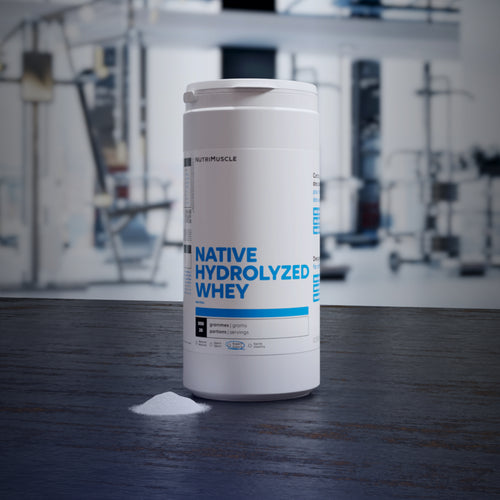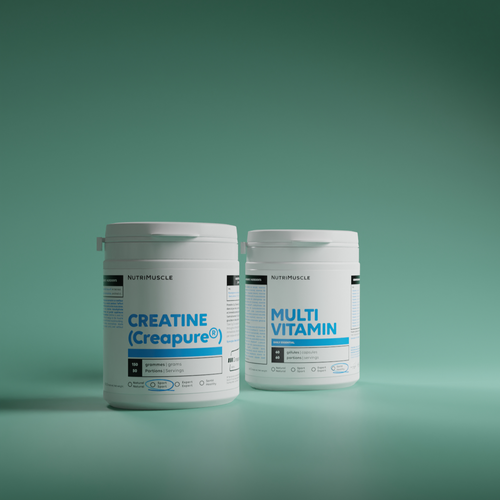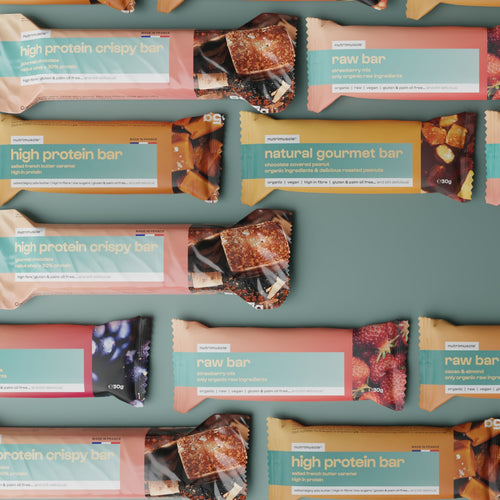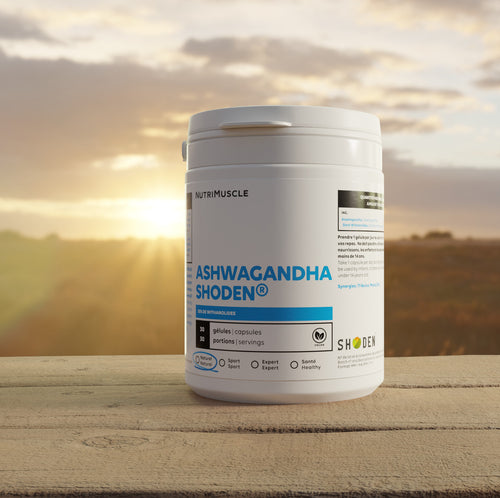0 commentaires
Progressing in endurance is a physical and mental challenge. Everyone has their own way of managing motivation and determination, but to progress physically and improve their endurance, there are universal and essential methods.
Lou Dolez, professional cyclist and Île de France champion in the 2km pursuit, tells how she worked on her endurance to surpass herself in her discipline:

Lou Dolez. 2020. Nicolas Vaucouleur ©
“In my discipline, track cycling, it was essential for me to improve my endurance. To achieve this, I followed specific training: land work. I also developed my muscular strength in the weight room to progress physically. Taking carbs during my long road cycling workouts also made me feel more energetic. In addition to carbohydrates, I have also incorporated amino acids and proteins into my sports nutrition to improve my recovery. This really allowed me to evolve in endurance in my discipline. »
As Lou Dolez explained, the 4 pillars of endurance progression are:Contents
The benefits of endurance sports
Endurance sports, such as running, swimming, cycling, provide many health benefits. In general, working on endurance has many benefits, such as:
- Preservation of cardiovascular health: endurance sports solicit the heart and blood vessels, which strengthens the cardiovascular system. They can help lower blood pressure, improve blood circulation and increase lung capacity.
- Strengthening muscles and bones: Endurance sports stimulate muscle growth, strengthen muscles and increase bone density. This helps prevent osteoporosis but also reduces the risk of fractures.
- Support in weight loss: endurance sports are effective in burning calories. They help maintain a low body fat percentage and promote the development of lean muscle mass.
- Reduced risk of chronic diseases: endurance sports are associated with a reduced risk of chronic diseases such as cardiovascular disease, type 2 diabetes, certain types of cancer and metabolic disorders.
- Protection of mental health : endurance physical activity is beneficial for mental health. It reduces symptoms of stress, anxiety and depression by improving mood and stimulating the production of endorphins, the feel-good hormones.
- Strengthening the immune system: regular practice of endurance sports strengthens the immune system, thus reducing the risk of infections and diseases.
- Improved sleep quality: Endurance sports promote deeper, more restorative sleep, which contributes to better sleep quality and a greater sense of rest.
- Enhancement of cognitive abilities: Regular practice of endurance sports is associated with improved cognitive functions such as memory, attention, concentration and mental flexibility.
How to work on your endurance?
Adapt your training
To improve your endurance, it is essential to carry out basic work or “fundamental endurance work” beforehand. This type of exercise consists of training at low intensity, for a long time over long distances. This work makes it possible to gradually increase:
- Your VO2max (maximal oxygen uptake). This index measures the maximum amount of oxygen that your body can use in order to convert it into muscle energy. This results in an ability to produce a repeated movement more quickly at a constant intensity of effort.
- Your body's ability to efficiently supply muscles with oxygen through the bloodstream. By soliciting your muscles and your lungs, you promote the development of capillaries (small vessels) essential to the transport of oxygenated blood in the human body. Improving this function is very strategic in endurance, because it is oxygen that converts glycogen into energy that can be used by the muscles.
There are several types of sessions that can improve endurance.
Interval training : Interval training alternates periods of intense effort with periods of active recovery. This method quickly improves cardiovascular endurance. Alternate between fast sprints and periods of slow walking or running.
Gradual increase in intensity : To improve endurance, it is important to gradually increase the intensity of training sessions. Start with moderate intensity sessions and gradually increase the duration and intensity of your workouts over time.
Continuous training: Incorporate moderate-intensity continuous training sessions into your program. Try to maintain a steady pace for an extended period of time, aiming for at least 30-60 minutes of continuous activity.
Improve your muscle strength
In endurance, the type of muscle that is more stressed is that containing “slow-twitch” muscle fibres. To delay the onset of fatigue, it is necessary to increase the resistance of these muscles to a long-term effort. Therefore, favor endurance and strength type bodybuilding exercises. They will allow you to improve your performance without causing "troublesome" muscle gain.
Increase your energy reserves
To delay the fateful moment of the depletion of your glycogen reserves, you must increase your carbohydrate reserves.
If the proper use of your glycogen stores can be obtained by training and managing effort over the long term. The increase in carbohydrate reserves will depend on appropriate sports nutrition.
The day before your workout, be sure to include low glycemic index carbohydrates in your meal. On the day of training, eat your meal at least 3 hours before the start of the effort. Focus on low glycemic index carbohydrates by adding medium glycemic index carbohydrates to save your glycogen stores before the start of training.
Throughout training, we recommend that you drink a carbohydrate drink to increase your physical resistance and avoid premature fatigue. Prefer carbohydrates with a very short passage time in the stomach and rapid assimilation for an immediate energy supply. High molecular weight carbohydrates like Cluster Dextrin provide consistent energy throughout the workout. Cluster Dextrin is gradually absorbed by the body which allows a gradual release of insulin.
Optimize your recovery
After training, if you want to limit the destruction of your muscle fibers and promote their reconstruction, we recommend that you consume carbohydrates with a low glycemic index such as sweet potato, BCAAs (amino acids) as well as a protein with assimilation fast like native whey for example. This will allow your body to stop the destruction of your muscle tissue and recover better, which is crucial if you train frequently. This will allow you to approach each workout with better abilities and better feelings.
To know all the secrets of a good recovery, we invite you to read our dedicated article.
For tips on how to stay motivated during your workout, read this article.
















